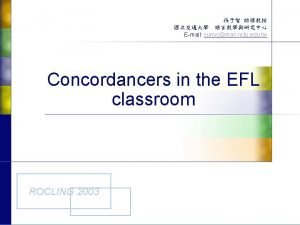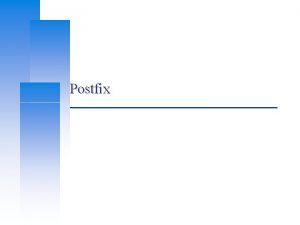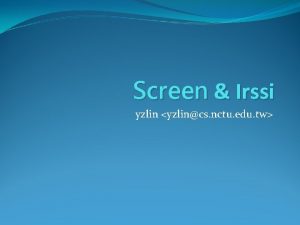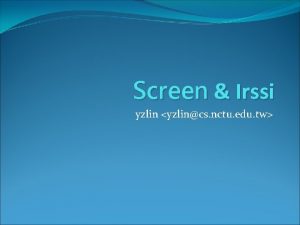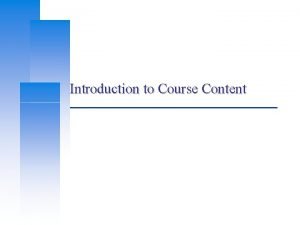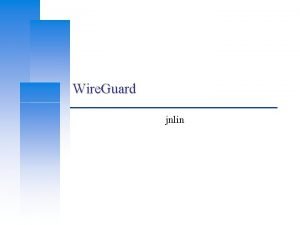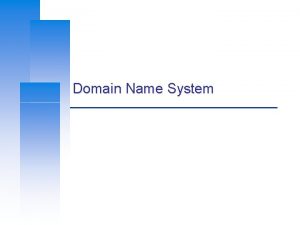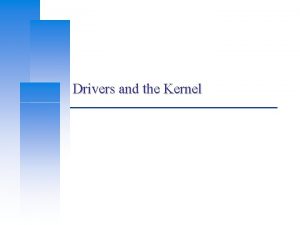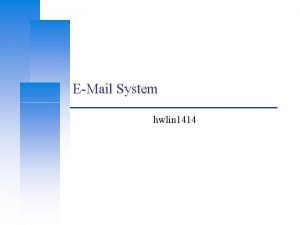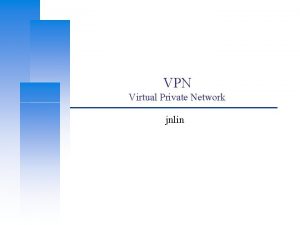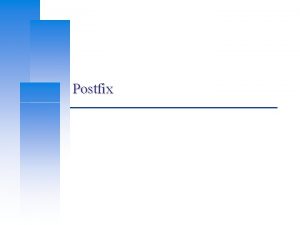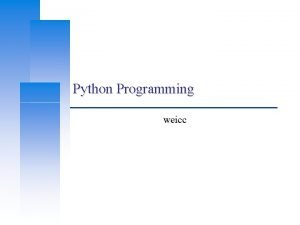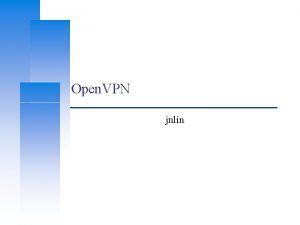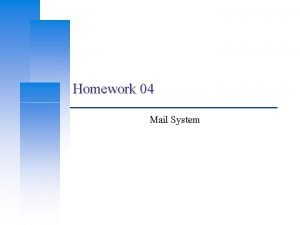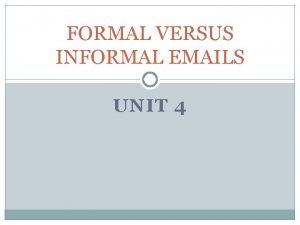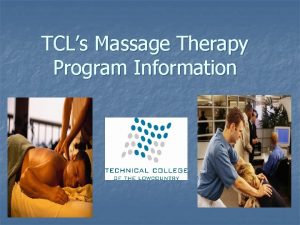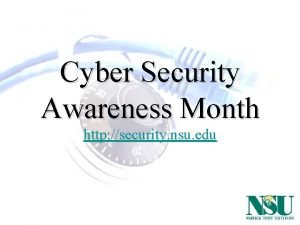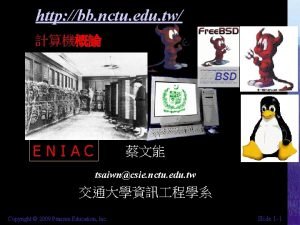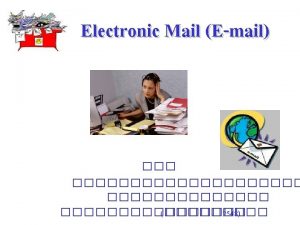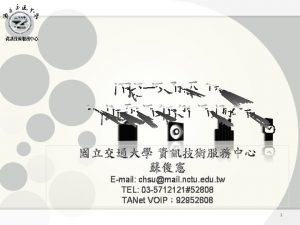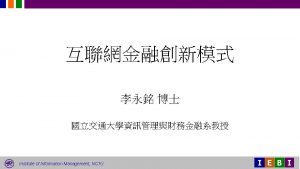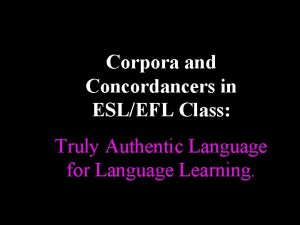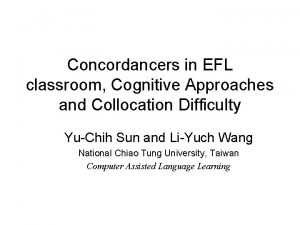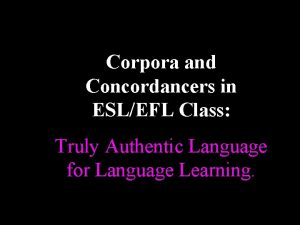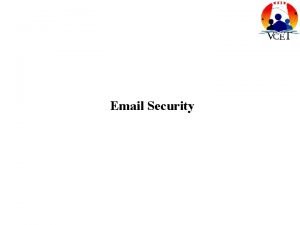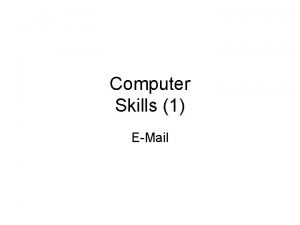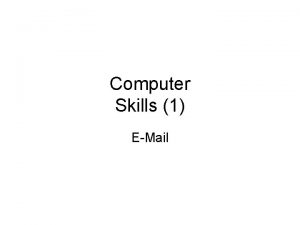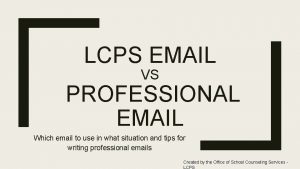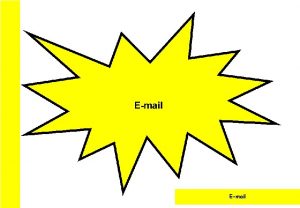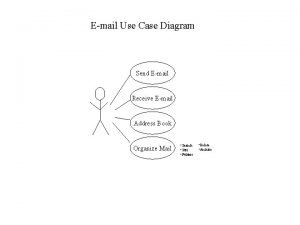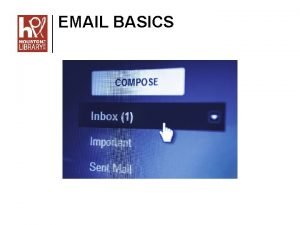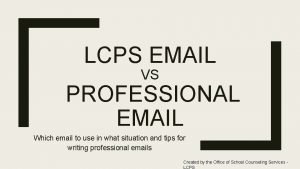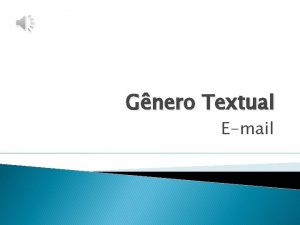Email sunycmail nctu edu tw Concordancers in the
























- Slides: 24

孫于智 助理教授 國立交通大學 語言教學與研究中心 E-mail: sunyc@mail. nctu. edu. tw Concordancers in the EFL classroom ROCLING 2003

Overview 5. What is concordancer? Why use concordancer? Who can use concordancer? What can you do with concordancer? Application of computer corpus 6. Concordancer development 7. Related research 1. 2. 3. 4.

What is a Concordancer? • A program which lists every occurrence of a given word, punctuation mark, affix, , or structure within a given text, showing its immediate context • Makes hidden patterns readily apparent. • The output, so produced, is called a concordance

Concordancer Online 香港理 大學 http: //www. edict. com. hk/concordance/ http: //132. 208. 224. 131/Concord. htm 雲林科技大學http: //plum. yuntech. edu. tw/concordancer/index. htm 交通大學 http: //140. 113. 115. 21/class 1/word/Word. Guess 6. asp British National Corpus (BNC) concordancer http: //sara. natcorp. ox. ac. uk/lookup. html Collins Co-build concordancer http: //titania. cobuild. collins. co. uk/form. html#democonc


Why use Concordancers? Underlying Assumptions: • Includes both written and spoken language, • Learners’ engagement with text plays a central role in the learning process • Fosters inductive learning • Favors discovery learning • Empowers learners • Injects authenticity • Enhance awareness of the meaning potential of English

Who can use Concordancers? o Teachers § Gather material for creating exercises based on real examples. § Create printed handouts o Students § Gain exposure to an endless series of examples § Look at examples; inductively come up with the rules § Confirm or reject hypotheses about specific points in the language § Exposure to many different styles & genres

What can you do with them? Explore …. . word forms word usage vocabulary grammatical features • • • syntax agreement stylistics collocation punctuation

Four ways to learn from corpus 1. Contingent reference § Reference in text production § Reference in text reception 2. Studying a language issue 3. Serendipitous exploration 4. Encyclopedic and oracular use

Skeptical about Concordancer “ Simply dumping 200 mullion words of corpus data in front of people isn’t going to be much help for most teachers and students. It takes time, commitment and some good software tools to become really expert in the analysis of this type of material. ” Clear, 1996

Concordancer development Search String - exact word or phrase, - start with (prefix) - end with (suffix) - embedded (root) Sorting - right - left - level of difficulty - unsorted Keyword alignment - Center - Left Difficulty index - On - Off Corpus - Localization (Studio classroom, Let’s talk in English) - BNC corpus - tagged corpus - multiple choice of corpus Integration with other language skills (reading, writing, etc)



Extensive Reading Online

Automatic concordance generator





Cognitive approaches and collocation difficulty Subjects 81 second year senior high school students Grouping Randomly assigned to inductive and deductive group Pretest and posttest Treatment Proofreading activities

Descriptive Statistics of scores for Deductive and Inductive Groups Approach Mean SD N Inductive 65. 00 24. 57 41 Deductive 48. 50 21. 25 40 Total 56. 85 24. 31 81

Descriptive Statistics of Difficult Collocation Pattern for Different Cognitive Approaches Approach Mean SD N Inductive 30. 73 13. 21 41 Deductive 24. 88 13. 32 40 Total 27. 84 13. 51 81

Descriptive Statistics of Easy Collocation Pattern for Different Cognitive Approaches Approach Mean SD N Inductive 34. 27 14. 98 41 Deductive 23. 63 14. 59 40 Total 29. 01 15. 64 81

Learning outcome Concordancing skills Teacher’s intervention Prior Knowledge Cognitive skills Syntax Comparing Function choice Encouragement semantics Grouping Word choice Reflection Reading proficiency Differentiating Corpus selection Identifying error type Inferencing Identifying error
 Csie.nctu.edu.tw webmail
Csie.nctu.edu.tw webmail Transport postfix
Transport postfix Csie.nctu.edu.tw login
Csie.nctu.edu.tw login Csie.nctu.edu.tw login
Csie.nctu.edu.tw login Nctu ok
Nctu ok Jnlin
Jnlin Nctu domain
Nctu domain Ok nctu
Ok nctu Hwlin
Hwlin Nctu electrophysics
Nctu electrophysics Electron nfc
Electron nfc Nctu vpn
Nctu vpn Allow_mail_to_commands
Allow_mail_to_commands Weicc
Weicc Nctu vpn
Nctu vpn Ntcu tld
Ntcu tld Email formal vs. informal
Email formal vs. informal Tcl.edu email
Tcl.edu email Stlcconecard
Stlcconecard Payroll umn
Payroll umn Nsu edu
Nsu edu Edu.sharif.edu
Edu.sharif.edu Tư thế ngồi viết
Tư thế ngồi viết Thẻ vin
Thẻ vin Thể thơ truyền thống
Thể thơ truyền thống
